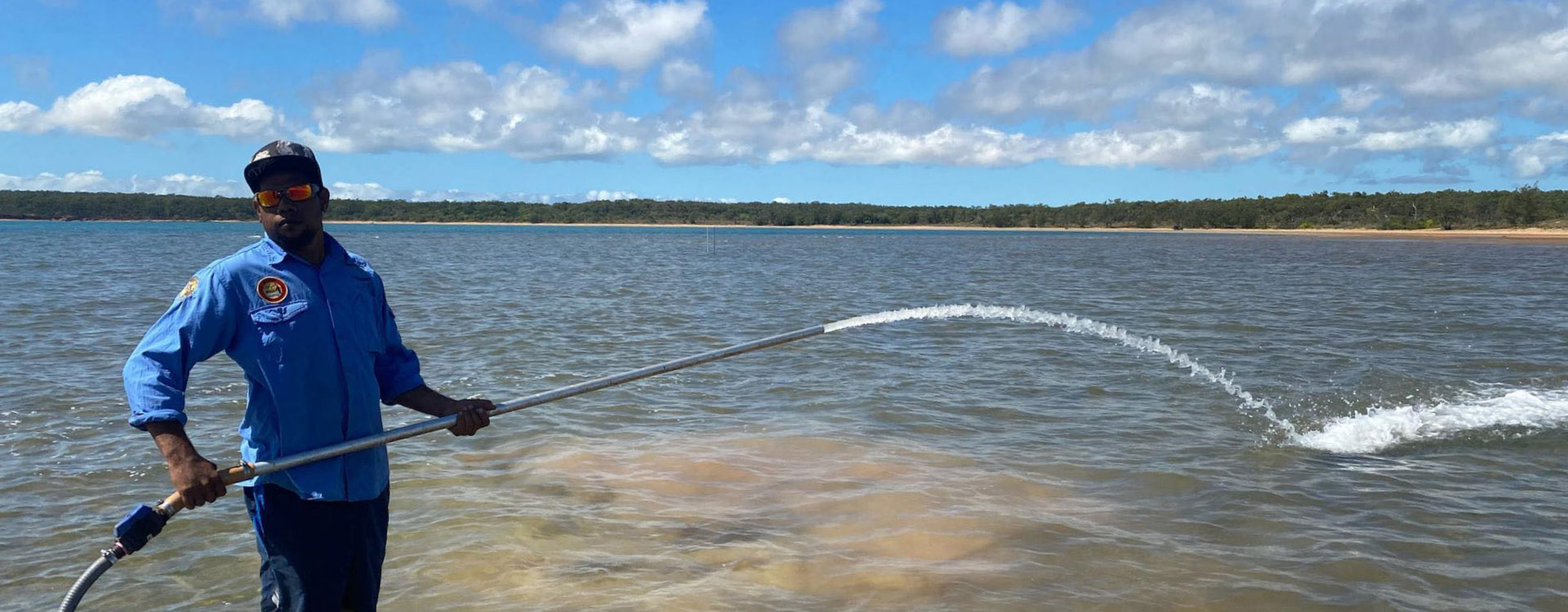
Creation of Northern Aquaculture Program
The Anindilyakwa Land Council’s creation of a northern aquaculture program has the potential to eventually benefit all Northern Territory Indigenous communities.
The underlying premise is to infuse the need for a sustainable commercial enterprise in a post-mining economy with Traditional Owner cultural and social values and sense of place.
To achieve this plan the land council’s Royalty Development Unit has had to think “outside of the box”.
Commercial success is not the only motivation – being mindful of traditional social values of family and community must also be incorporated in the enterprise at a grassroots level.
The aquaculture project has three major streams, which are being developed in conjunction with leading industry professionals and university-led research partnerships: tropical rock lobster, black lip oysters and trepang.
More species are under consideration and research into these opportunities will slowly unfold as the program gains social and commercial traction.
The collection of tropical rock lobster larvae (Panilurus ornatus) is a significant step forward in the development of a new enterprise opportunity for Traditional Owners and, in a broader context, the Northern Territory plan to rebuild and rebound from pandemic.
Under the direction of a Professor of Aquaculture from James Cook University, the lobster larval collection program has been approved by NT Fisheries for a stage 1 survey, which will analyse and assess the quantity of puerulus lobsters in the Groote archipelago.
Pending the outcome of the survey, harvested puerulus will be able to be grown out to marketable adult size for commercial export to domestic and international markets.
A Phd marine biologist is consulting with the ALC’s aquaculture program over planning a trepang hatchery, nursery and sea ranching.
Groote has a long history of dealing with Makassan trepang traders.
The most common species of trepang in the archipelago is sandfish (Holothuria scabra), which is a sought-after delicacy throughout South East Asia and is recognised as having medicinal and dietary benefits.
Its commercial value, particularly in mainland China, Hong Kong and Taiwan, will support the aquaculture enterprise.
In conjunction with the Darwin Aquaculture Centre, the ALC is also conducting a trial program for the growing of black lip oysters.
A three-year research program is being coordinated between the centre and the ALC Rangers to quantify growth rates and viability of the oysters for domestic and export consumption.
